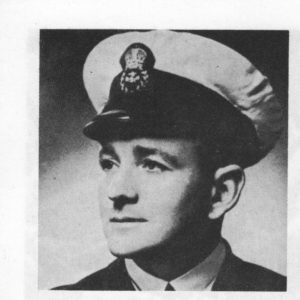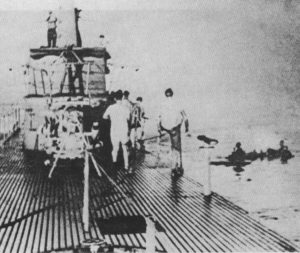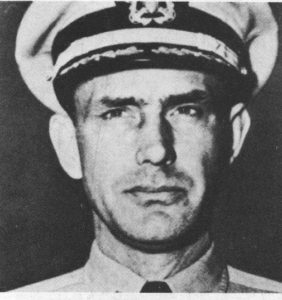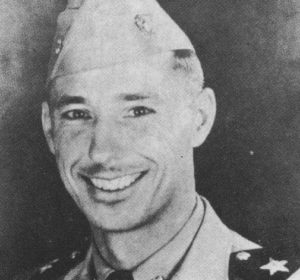In 1944, hundreds of Australian and British prisoners of war (PoW) held by the Japanese were briefly held at the River Valley Road Camp in Singapore. They were then going to be sent to Japan to work in coalmines there. A convoy of eight vessels with PoW onboard left Singapore on 6th September 1944. The vessels in the convoy comprised of the 10,000-ton Kachidoki Maru (formerly the American ship President Harrison), two oil tankers, two cruisers, a corvette, another small naval vessel and the 9,000-ton passenger/cargo ship Rakuyo Maru (one of many different spellings).
The 10,000-ton Kachidoki Maru (formerly the American ship President Harrison)
(Both the Kachidoki Maru (ex-American) and the Rakuyo Maru (ex-British) were 1921-vintage ships.)
The 9,000-ton ship Rakuyo Maru
One of the oil tankers was carrying heavy bunker oil and the other one was carrying high octane aviation fuel. The holds of the Rakuyo Maru were laden with rubber and kapok (silky fibres from the seeds of the kapok tree, used as a filling for mattresses, pillows, life preservers, and sleeping bags and as insulation). Three other ships apparently soon joined the convoy sailing towards Japan.
At 5am on 12th September, the American submarines USS Pampanito (given different spellings) USS Sealion II (or Sea Lion) and USS Growler attacked the Japanese convoy and, in doing so, killed some 1000 PoW. Both the Rakuyo Maru and the Kachidoki Maru (also given different spellings) were hit by two US torpedoes and sank. The USS Pampanito hit the Kachidoki Maru, whilst the USS Sealion II (or Sea Lion) hit the Rakuyo Maru.
There were 900 POW onboard the Kachidoki Maru and 1300 onboard the Rakuyo Maru. Everyone on the Rakuyo Maru escaped injury from the torpedo strikes. Despite that, some 1000 POW died as a result of the attacks on the convoy (543 Australians, including 25 South Australians). POW on the Rakuyo Maru included 41 of the 329 survivors from HMAS Perth, which sank at the entrance to Sunda Strait after being attacked by the Japanese fleet.
Chief Petty Officer, Victor Duncan from HMAS Perth
Chief Petty Officer, Victor Duncan from HMAS Perth was on his third sinking ship and he helped the PoW to not panic and encouraged them to fill their water bottles first. The ship, however, sank quickly. The PoW knocked any Japanese personnel into the water and launched some lifeboats for their own use. Not everyone, however, made it into a lifeboat at all. They had to cling to any kind of floating raft-like object.
The crew of a Japanese destroyer machine-gunned those onboard one of the lifeboats. A Japanese ship picked up any Japanese personnel, but ignored any PoW. POW were left drifting in the sea. Other Japanese ships picked up PoW on other lifeboats. PoW were burned by aviation fuel in the water. They found that the bunker oil helped to relieve the burning pain. The sludge from the heavy bunker oil also helped to protect their skin from the hot sun over the next few days. The PoW were threatened by sharks but the oil kept the sharks at bay.
USS Sea Lion II (or Sealion)
The USS Pampanito and the USS Sea Lion II (or Sealion) both returned some days later to rescue PoW from both the Kachidoki Maru and the Rakuyo Maru. It seems that the USS Sealion rescued 54 POW, whilst the USS Pampanito rescued more than 70 (possibly 92), but two of them died.
A group of PoW about to be taken aboard USS Pampanito
The USS Pampanito was under the command of Paul E Summers
The USS Sealion II was under the command of Eli T Reich
Two more submarines were despatched from Pearl Harbor to rescue more POW, the USS Barb and the USS Queenfish. The USS Queenfish was under the command of Elliott Loughlin.
The USS Barb was under the command of Eugene B Fluckey
They found another 32 POW between them but, again, two of them died. On 17th Sept 1944, the USS Barb rescued 14 POW, pulling them from the water with only hours left to live. All of them were covered in oil and clinging to debris. There were ten Australians and four British rescued by the USS Barb. Just one of the ten Australians was from South Australia. He was the last man pulled from the water. He was Private Murray Thomson of the 2/2 Reserve Motor Transport Company (Adelaide).
All four submarines rescued a total of 152 PoW, whilst the Japanese rescued some more of them. A Japanese destroyer rescued 650 POW from lifeboats and took them to Japan. 150 of them were from the Rakuyo Maru and 500 of them were from the Kachidoki Maru. Eight of them were originally from HMAS Perth.
According to the “Navy League of Australia – State Divisions” web page at http://navyleag.customer.netspace.net.au/sd_05a.htm , only 152 PoW out of a total of over 2000 prisoners were eventually picked up by the US submarines, including the USS Growler. Growler was under the command of Thomas B Oakley.
Commander of the USS Growler, Thomas B Oakley
According to the (former?) “65th Anniversary Fall of Singapore Commemoration Service Address” web page at http://huntermilitaryhistory.net.au/forums/index.php?PHPSESSID=03272bf495b5921b42f… , there were 717 Australian prisoners amongst the 1300 PoW onboard the Rakuyo Maru and only 174 of them survived the US submarine attack. 92 of them were rescued by the USS Pampanito, whilst the other 82 were picked up by a Japanese destroyer.
(I may have started getting into a real tangle over these numbers of PoW rescued, so I may just have to leave it at that now.)
The submarines took the PoW to their mother-ship which then took them on to the South Pacific island of Saipan where the Americans had set up a strike base. The PoW were eventually taken to Brisbane, Australia where they disembarked on 3rd December 1944. Each PoW eventually returned to their respective home State.
(Much of the above details were gleaned from these four web pages:
“Survival – At Sea and On Land – A Wartime Resume of an Australian Sailor” (From “Prisoners of War of the Japanese 1942-1945”) at http://www.pows-of-japan.net/articles/61.htm
“Four Days in the South China Sea” (From “The 4th Anti-Tank Regiment – It happened to Us – Bill Cuneen”) at http://home.vicnet.net.au/~antitank/Publications/It_Happened/Chapters/Bill_Cuneen/cuneen.htm
“Navy League of Australia – State Divisions” at http://navyleag.customer.netspace.net.au/sd_05a.htm
“65th Anniversary Fall of Singapore Commemoration Service Address” at http://huntermilitaryhistory.net.au/forums/index.php?PHPSESSID=03272bf495b5921b42f……..
I was given the titles of several books, which I never got to read:
“Thunder Below!” by Eugene B Fluckey* (1992)
“Heroes at Sea” by Don Wall?
“Blackforce”? by Andrew Faulkner?
“Hellfire Pass” by Cameron Forbes
And a 2002 book, title unknown by Harold Ramsay
Commander of the USS Barb, Eugene B Fluckey
* Eugene B Fluckey was the Commander of the USS Barb and he was awarded the US Congressional Medal of Honour in 1945. He retired from the US Navy in 1972 with the rank of Rear Admiral. He died in Maryland, USA on 28th June 2007. (These details have been taken from his obituary in The Advertiser on 15th September 2007.











